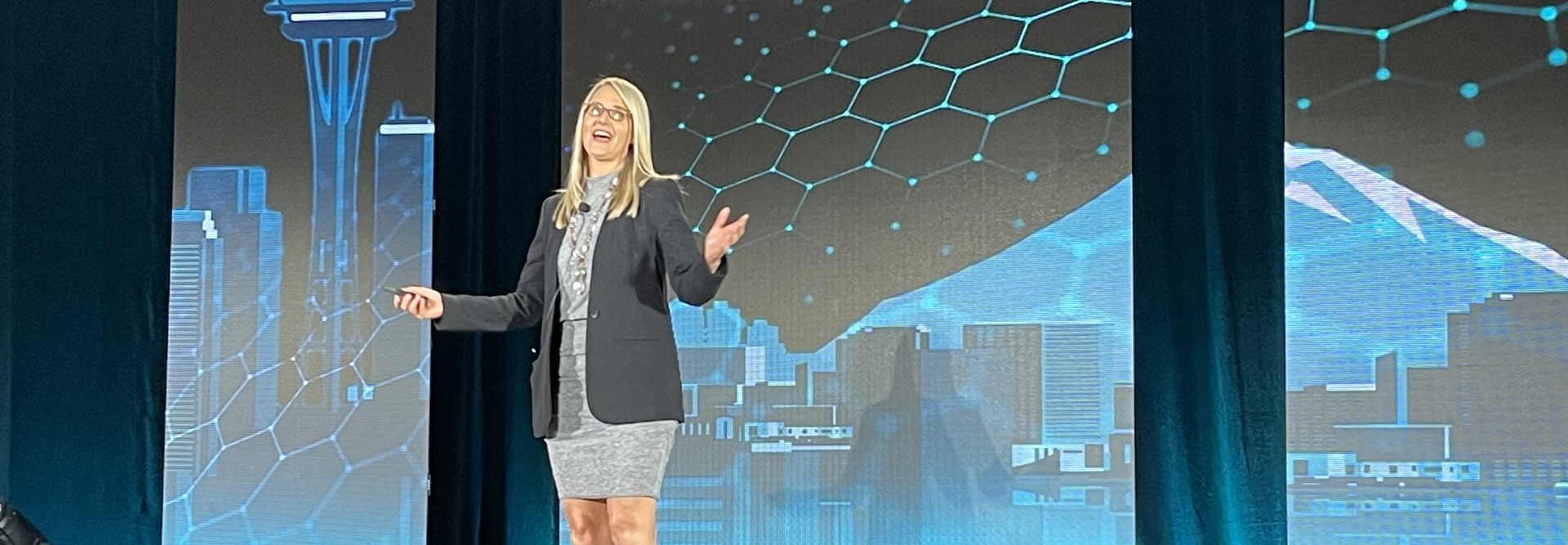Imagining the Workplace of the Future
In conducting its research, Poly has tried to use its customers’ experiences to build a roadmap to plan for the future of work. “Hopefully, the insights from our research can help you think about having a framework that you can use with your employees to make something that’s maybe scalable and dependable for future planning,” Adams said.
The pandemic caused a major shift in prognostications because it altered so many elements of the work experience. “We can agree everything’s changed, the places where we're working, how we are working, the tools that we need to use on a given day. And so, taking into account the fact that so much has changed, there is an opportunity to think about the different touchpoints for users.”
Because of the pandemic, cloud migration, remote work, the Great Resignation and other factors, Adams said she views the current situation as an opportunity to focus on people. “It’s important to understand that we all have different needs and behaviors when it comes to how we like to work. Your role might influence that. You might prefer to be in the office, or you might prefer to be virtual, and sometimes that may change throughout the day. And so, understanding work styles is an important factor in being able to plan for the future.”
READ MORE: Find out what IT leaders can do to embrace hybrid work.
Research Identifies Multiple Styles of Workplace Communication
Adams explained that we all have preferred styles of working, and by studying those preferences, Poly was able to identify six personas in the workplace. She defined a persona as an archetype, or collection of behaviors.
“What's unique about our personas compared with some others that I've seen in the industry is these are behavior-based. So, these are actually not based on what you do for your job, but on how you do it,” she said. “This is behavioral, as in, what is the communication intensity that you might have based on your work location, technology savviness, where you’re working on a given day, how much mobility you have.”
Based on those factors, Poly identified six collaborative work styles, which Adams described for SummIT attendees:
- Office Communicator: “Typically, this person was spending 97 percent of their typical day in the office prior to the pandemic. They report that they feel more productive working in the office, and they’re less likely to have an office at home because they value more the separation of work life and home life.”
- Office Collaborator: “Before the pandemic, they were spending about 93 percent of their time in the office, and they report that they feel equally productive working at home or in the office. So, this is a work style that actually can benefit from a couple of days working from home.”
RELATED: Discover what your organization can do to optimize employees’ relationship with tech.
- Remote Collaborator: “They spend more than 50 percent of their time out of the office. This includes a group of people who work from home all the time now. But it also includes people who will come in one or two days a week.”
- Flexible Worker: “This is somebody who might work from home in the morning and then come into the office. They might be client-facing, or they may have some travel. And so, they’re all about trying to stay connected through transitions.”
- Road Warrior: This group has the same problem as flexible workers, except they’re very mobile. “It's a small group, but they have very specific pain points.”
- Connected Executive: “They’re very tech-savvy. They cover so many different locations, they’re working from a bunch of different spaces and use a bunch of technology, and they’re most likely to be the main speaker in their calls. That’s an important distinction, because this is a group that really needs to be able to show up and be heard and seen clearly in their calls.”














